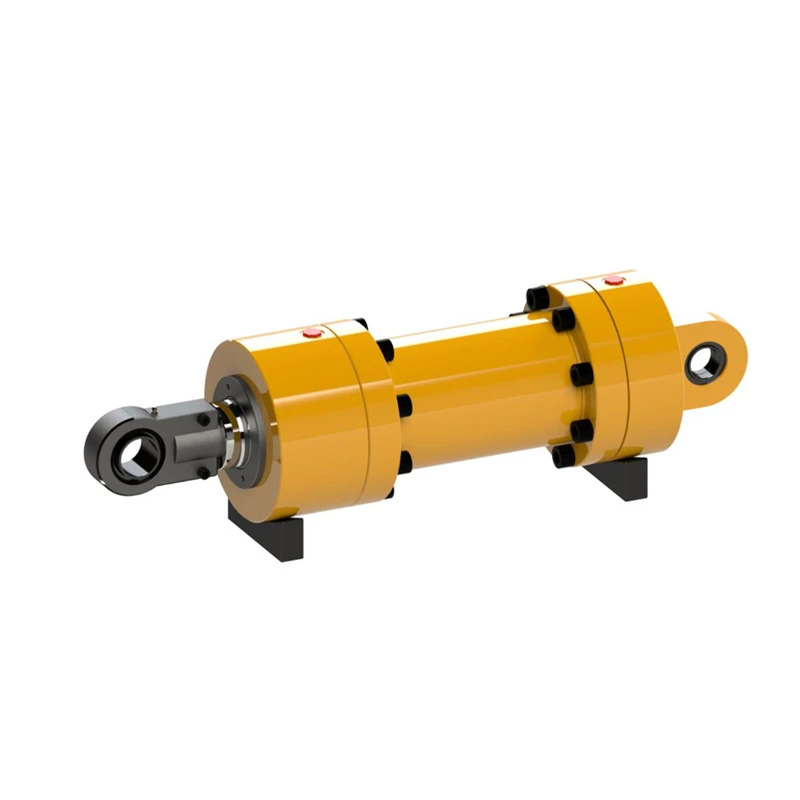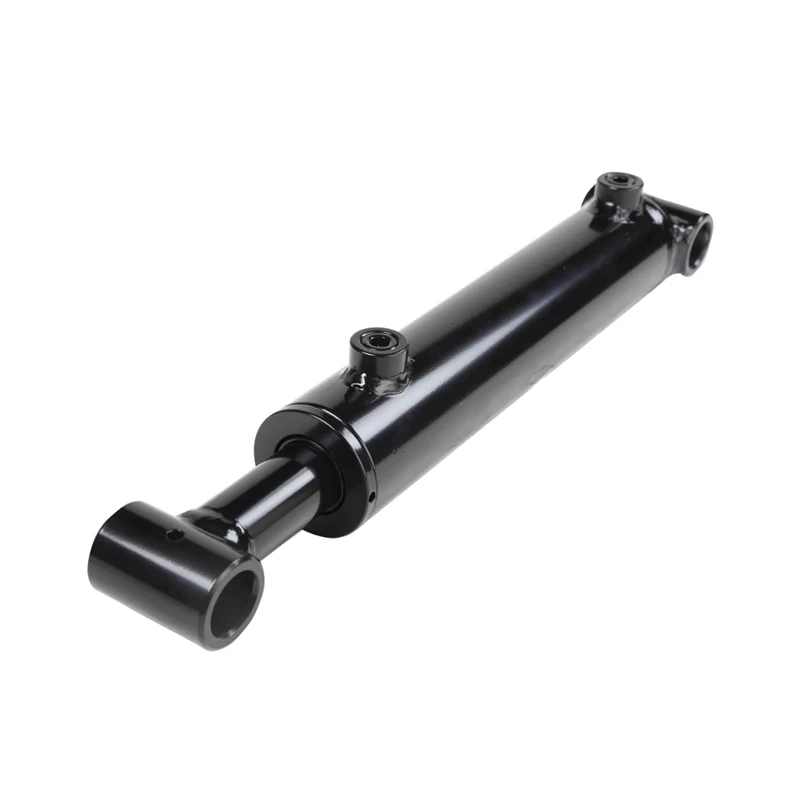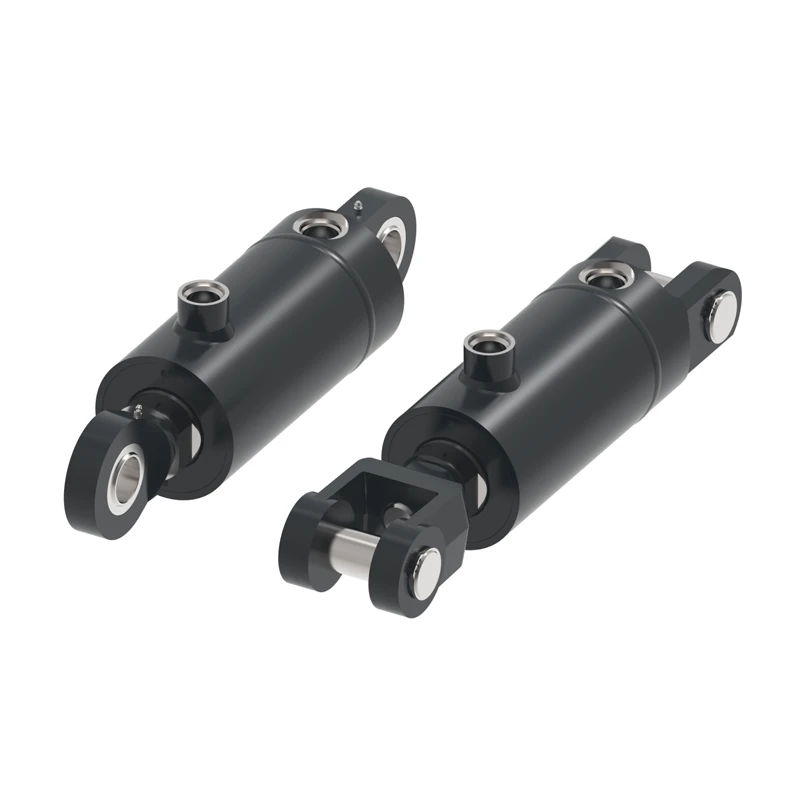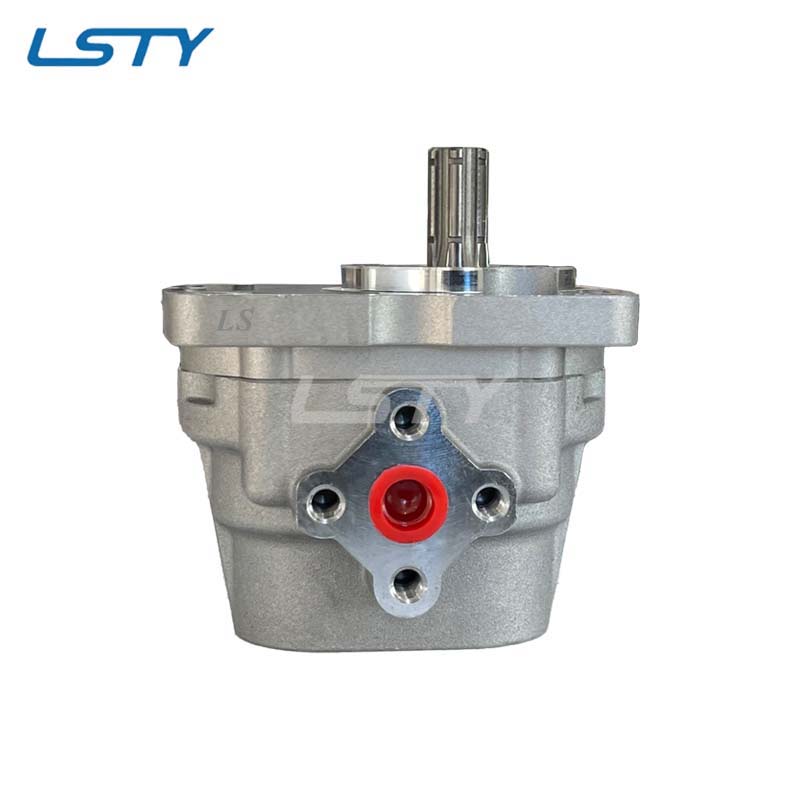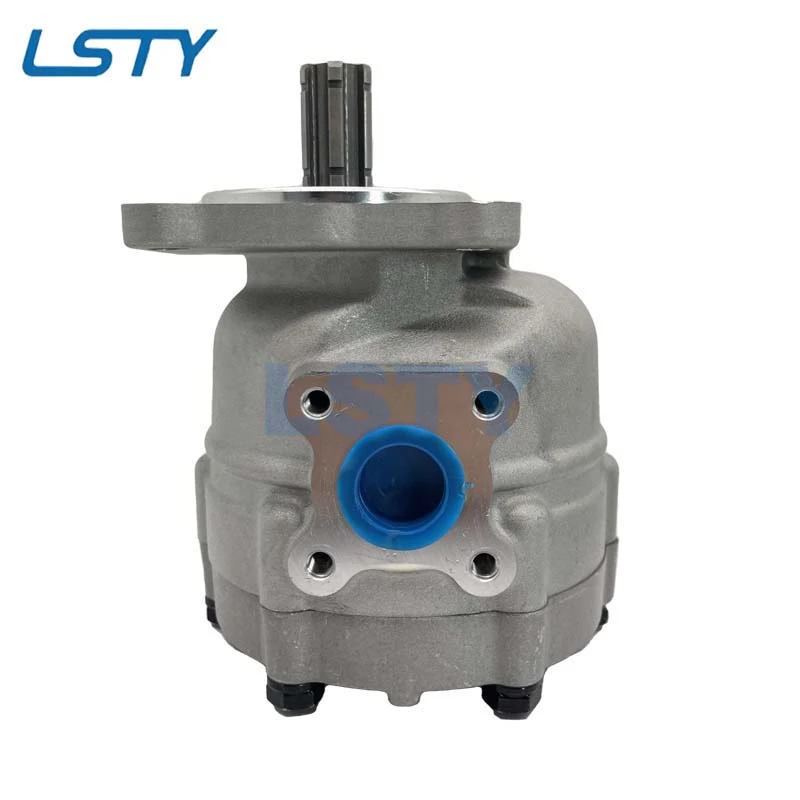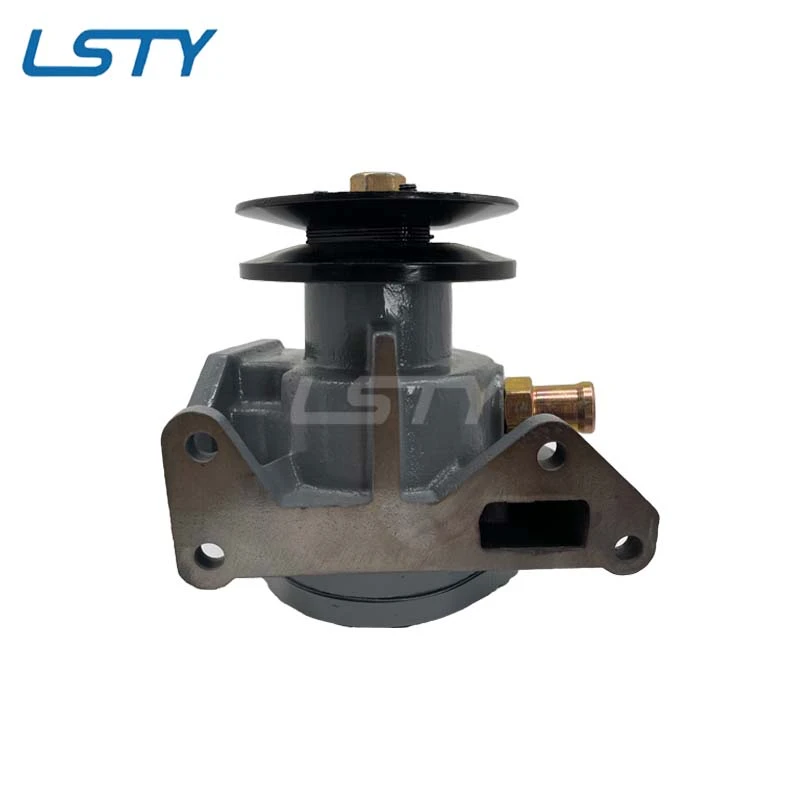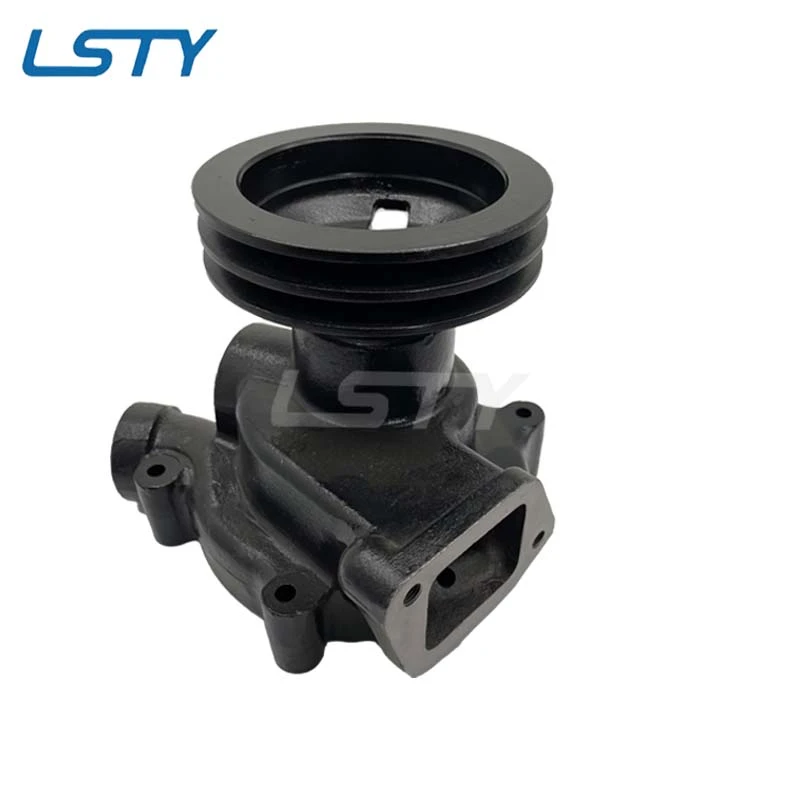How Air Directional Control Valves Power Your Pneumatic World
Volver a la listaIn the bustling heart of countless factories, assembly lines, and automated systems, a silent orchestra plays. Air hisses, cylinders extend and retract, grippers open and close – all choreographed with precision. The conductors of this mechanical symphony? Air Directional Control Valves (ADCVs). Often overlooked but utterly indispensable, these valves are the fundamental components dictating the flow of compressed air, transforming simple pressure into controlled motion. Understanding how they work unlocks the secrets behind efficient automation and reliable machinery. At HEBEI LONGSHENGTENGYU PUMP INDUSTRY CO., LTD (LSTY), with over two decades of expertise in fluid power components including high-quality valves, we recognize the critical role these components play. We integrate robust design, precision manufacturing, and a deep understanding of pneumatic systems to deliver valves that form the reliable backbone of your operations.
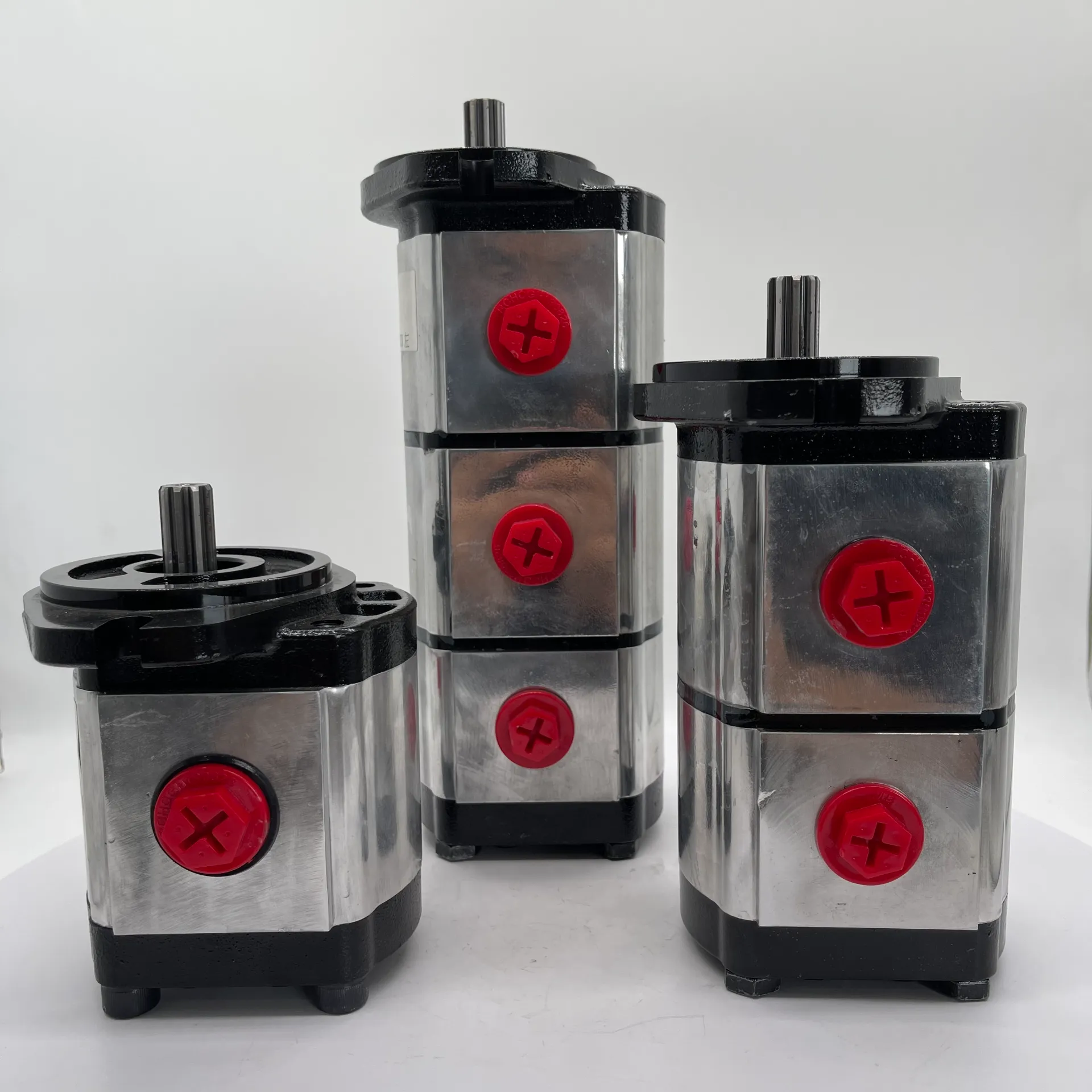
Demystifying the Core: What is a Directional Control Valve?
At its most fundamental level, a directional control valve is a traffic cop for fluid power. Its primary function is to start, stop, and change the direction of fluid flow (liquid or gas) within a circuit. While our focus here is on pneumatic (air) systems, the core principle applies to hydraulics as well. Think of it as a sophisticated switchboard for power transmission.
A basic directional control valve is characterized by two key parameters:
Number of Ports (Ways): This refers to the number of connection points on the valve. Common configurations include:
2-way, 2-position (2/2): Simplest form. Has one inlet port (pressure, P), one outlet port (A), and exhaust (often combined or separate). It acts like an on/off switch for flow to a single port. Open = flow from P to A. Closed = flow blocked, A may exhaust.
3-way, 2-position (3/2): Has ports P (pressure), A (actuator), and R (exhaust). In one position, P connects to A (extending a single-acting cylinder). In the other position, A connects to R (exhausting the cylinder, allowing spring return).
4-way, 2-position (4/2): Has ports P (pressure), A & B (actuator ports), and R & S (exhaust ports, often combined). This is the standard for controlling double-acting cylinders (cylinders that use air pressure to move in both directions). In position 1: P->A, B->R (extend). In position 2: P->B, A->S (retract).
5-way, 2-position (5/2): Similar to 4-way but has separate exhaust ports (R and S) for each actuator port (A and B). This allows independent control of exhaust speed, enabling better cylinder speed control and cushioning.
3-position Valves: These add a center position (neutral) where all ports may be blocked, or P blocked while A & B exhaust, or P connected to both A & B, etc. This allows the actuator to be stopped mid-stroke or held in position (under certain conditions).
Number of Positions: This indicates how many distinct flow path configurations the valve spool or poppet can achieve. "2-position" valves switch between two states (e.g., extend/retract). "3-position" valves have a neutral center state.
The heart of the valve is the moving element that shifts to change the flow paths – typically a spool (a cylindrical shaft with machined lands and grooves) or a poppet (a disc or ball that lifts off a seat). Shifting this element connects different ports, directing the air flow accordingly. This shift can be achieved manually (lever, pushbutton), mechanically (roller, plunger), pneumatically (pilot air pressure), or electrically (solenoid), which brings us to the most common actuator type.
The Air Advantage: Specifics of Air Directional Control Valves
While the core function of directing flow remains constant, air directional control valves possess unique characteristics and face distinct challenges compared to their hydraulic counterparts, primarily due to the nature of the medium they control – compressed air.
Medium Characteristics: Air is compressible, unlike hydraulic oil. This means ADCVs must handle rapid pressure changes and potential expansion effects. They deal with relatively lower operating pressures (typically 60-150 PSI / 4-10 bar) compared to hydraulics. Air also contains moisture (humidity) and can carry particulates and lubricant aerosols from the compressor system.
Sealing Requirements: Seals in ADCVs must prevent leakage of a gas, which is inherently more prone to leakage than liquids. Specialized elastomers like Nitrile (NBR), Polyurethane (PU), or Fluorocarbon (FKM/Viton) are used for their excellent gas sealing properties and compatibility with compressed air and potential lubricants.
Flow Dynamics: Achieving smooth and controlled cylinder motion requires careful consideration of flow capacity (Cv factor). Air expands rapidly as it exits the valve, so port sizing and flow paths are critical to minimize pressure drop and ensure sufficient air volume reaches the actuator quickly for responsive movement.
Speed and Response: Pneumatic systems are prized for their speed. ADCVs, especially solenoid directional control valves, must shift rapidly and reliably, often millions of times. Low mass spools or poppets and optimized magnetic circuits in solenoids are essential.
Exhaust Management: Efficient and often quiet exhaust is crucial. Many ADCVs incorporate exhaust ports with optional mufflers or speed control valves (needle valves) to manage the noise and control the retraction speed of cylinders.
Lubrication: While modern systems often run "oil-free," some ADCVs are designed to handle lubricated air or have internal lubrication points. Compatibility with any lubricants present is vital for seal longevity.
Designing and manufacturing a robust, leak-free, fast-acting, and durable air directional control valve requires deep expertise in pneumatics, materials science, and precision engineering – areas where LSTY leverages its 21 years of manufacturing excellence. Our valves are designed considering these specific air-handling challenges, ensuring optimal performance and longevity in demanding industrial environments.
The Electric Pulse: How Solenoid Directional Control Valves Operate
The most prevalent type of actuation for modern air directional control valves, especially in automated systems, is the solenoid directional control valve. This combines the flow-directing valve body with an electromagnetic actuator – the solenoid. Here's the breakdown:
The Solenoid: This is an electromagnet. It consists of a coil of wire wound around a ferromagnetic core (armature) and a stationary ferromagnetic frame. When an electrical current flows through the coil, it generates a magnetic field.
Magnetic Force Generation: The magnetic field pulls the movable armature towards the center of the stationary frame. This movement is linear.
Mechanical Linkage: The armature is mechanically linked to the valve's spool or poppet assembly inside the valve body. The pull of the armature directly translates into the shifting movement of this internal element.
Shifting the Flow Path: As the spool or poppet moves, it uncovers and covers specific ports within the valve body. This changes the internal connections between the P (pressure), A, B, and exhaust ports, thereby changing the direction of air flow to the actuator (cylinder or motor).
De-energization: When the electrical current to the solenoid coil is switched off, the magnetic field collapses. A return mechanism (usually a spring) then pushes the armature back to its original position, returning the valve spool/poppet to its default state (often called the "de-energized" position).
Pilot-Operated vs. Direct Acting:
Direct Acting: The solenoid force directly moves the main spool/poppet. Suitable for smaller valves with lower flow rates where the solenoid force is sufficient to overcome spool friction and any flow forces.
Pilot-Operated: Used for larger valves requiring higher flow rates. The solenoid first shifts a small, low-force directional control valve (the pilot valve). The air pressure from this pilot valve is then used to shift the main, high-flow valve spool. This allows a small, low-power solenoid to control a large valve.
Solenoid directional control valves offer significant advantages: rapid response times (switching in milliseconds), ease of integration with electronic control systems (PLCs), remote operation, and suitability for high cycling frequencies. LSTY manufactures a wide range of robust solenoid directional control valves, ensuring reliable electrical actuation coupled with precise air flow control, backed by our strong technical support and supply chain management.
Powering Efficiency and Reliability: LSTY's Commitment to Valve Excellence
HEBEI LONGSHENGTENGYU PUMP INDUSTRY CO., LTD (LSTY) stands as a leading force in industrial fluid power solutions since its founding in 2000. Driven by the core principles embodied in our name – power products, ensured quality, efficient service – we have evolved into a comprehensive one-stop provider. Integrating R&D, manufacturing, resource integration, and trade services, LSTY operates through four synergistic centers: Marketing, Supply Chain Management, Manufacturing, and Integration. These centers function as powerful engines, all aligned towards a singular goal: delivering superior products and services that create tangible value for our global clientele.
While our heritage is deeply rooted in water pumps (Engine cooling water pumps, Gear pumps), our expertise extends significantly into the critical domain of fluid control. Our business scope explicitly includes "Valve castings, repairing and reconditioning," and our product portfolio encompasses high-quality Valves, Cylinders, and fittings, alongside customized solutions. We understand that components like air directional control valves are not just parts; they are the nervous system of pneumatic machinery. Downtime caused by valve failure translates directly into lost productivity and revenue.
This understanding fuels our commitment to manufacturing excellence. LSTY's directional control valves, including solenoid directional control valves, are produced under stringent specifications and adhere to rigorous industry standards. Our strong technical team ensures designs are optimized for performance and durability, while our skilled manufacturing center executes with precision. Materials are carefully selected for compatibility with compressed air, wear resistance, and long service life. Every valve undergoes thorough quality checks.
We export our confidence-inspiring products worldwide, including Russia, Belarus, Czech Republic, and the Middle East, earning trust through consistent quality and responsive service. At LSTY, "We think more than customers." We proactively anticipate challenges and design solutions. Our focus is on building lasting partnerships by fighting to make value-added contributions to your operations. We treat your needs and interests as our own, constantly striving to improve quality and service. This commitment manifests in competitive pricing, flexible payment terms, and critically – fast delivery. We recognize that getting reliable components like air directional control valves quickly is essential to keeping your production lines moving. LSTY looks forward to collaborating with customers globally, leveraging our expertise in valves and fluid power to drive mutual success.
Air Directional Control Valve FAQs
What are the main advantages of using an Air Directional Control Valve?
The primary advantages of air directional control valves are fundamental to pneumatic systems: precise control over actuator movement (start, stop, direction change), rapid response times enabling high-speed automation, inherent safety due to air compressibility (no fire hazard, overloads typically cause stall not damage), relative simplicity and cleanliness compared to hydraulics, and cost-effectiveness for many force/speed requirements. They are the essential component for converting compressed air energy into controlled mechanical motion reliably and efficiently.
Why choose a Solenoid Directional Control Valve specifically?
Solenoid directional control valves offer unparalleled advantages for automation: seamless integration with electronic controls (PLCs, sensors), enabling complex sequencing and remote operation; extremely fast switching speeds (milliseconds) for high-cycle applications; reliable and consistent actuation without manual intervention; compact size relative to their flow capacity (especially pilot-operated types); and availability in a vast range of configurations (ports, positions, voltages, materials) to suit virtually any pneumatic control requirement. They are the cornerstone of modern, electrically controlled pneumatic systems.
How does LSTY ensure the durability of its Directional Control Valves?
LSTY ensures directional control valve durability through multiple stringent measures: selecting high-grade materials (robust bodies, wear-resistant spools/poppets, gas-tight seals like NBR, PU, FKM); precision manufacturing processes guaranteeing tight tolerances and smooth operation; rigorous quality control testing at various stages; designs optimized for efficient flow and minimal wear; and construction robust enough to withstand industrial vibration, pressure spikes, and environmental contaminants commonly found in compressed air systems. Our 21-year manufacturing heritage is built on delivering long-lasting components.
Can LSTY provide custom Air Directional Control Valves?
Absolutely. LSTY specializes in providing customized solutions. Our integration center and strong technical team can develop tailored air directional control valves to meet unique specifications. This includes bespoke port configurations, specific flow requirements (Cv), unusual voltages or connector types, special materials for corrosive environments, unique mounting options, or integration with specific control systems. We "fight for making value-added to our customers," and custom solutions are a key part of that commitment.
What makes LSTY a reliable supplier for Directional Control Valves?
LSTY stands out as a reliable directional control valve supplier due to: Ensured Quality built on 21+ years of manufacturing expertise and strict adherence to standards; a Powerful Engine of integrated centers (Marketing, SCM, Manufacturing, Integration) ensuring smooth operations; Efficient Service with a skilled sales and tech support team; Fast Delivery supported by effective supply chain management; Competitive Pricing and flexible terms; and a core philosophy of considering "customer's needs and interests as our own," driving continuous improvement in both products and service. We are your committed, one-stop partner in fluid power.
-
Tandem Hydraulic Pump for Multi - Function SystemsNoticiasJul.16,2025
-
Selecting The Right Hydraulic Motor TypeNoticiasJul.16,2025
-
Engine Cooling Pump Bearing Noise CausesNoticiasJul.16,2025
-
Double-Ended Hydraulic Cylinder in Steel Rolling MillsNoticiasJul.16,2025
-
Design Optimization for Efficient Metal CastingsNoticiasJul.16,2025
-
Unveiling the Power and Precision of Hydraulic CylindersNoticiasJul.16,2025
-
The Critical Role of High Flow Hydraulic Motors in Modern ConstructionNoticiasJul.16,2025








